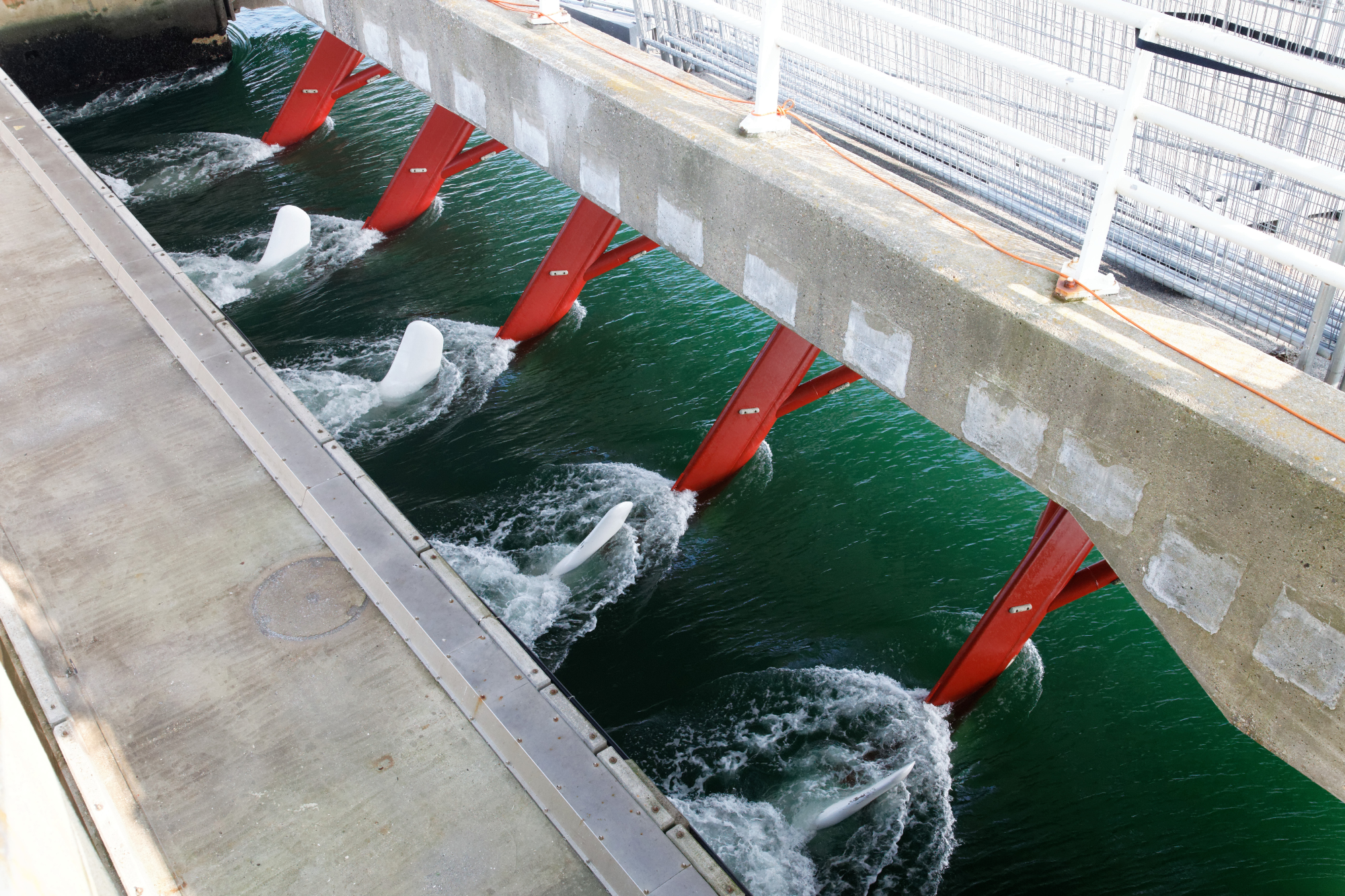 Image Credit: Breedfoto/Shutterstock.com
Image Credit: Breedfoto/Shutterstock.com
In November, the European Marine Energy Centre (EMEC) in Scotland announced it would be installing a 1.8-MWh flow battery at the organization’s tidal energy pilot site on the Scottish island of Eday.
This novel blend of tidal power technology and flow battery technology powers EMEC’s on-site hydrogen production facility. The setup will allow for continuous green hydrogen production from a variable renewable energy source. Produced by the UK-based Invinity Energy Systems, the flow battery system to be utilized at the EMEC tidal facility will be assembled from eight separate modules. The project is expected to go live by the end of 2021.
How does a Vanadium Redox Flow Machine Work?
Video Credit: redT energy/YouTube.com
Dependent upon rising or falling tides, tidal power is predictable yet highly variable. There are four inherent cycles to tidal energy each day. By comparison, solar energy has just one charge and discharge cycle per day.
Due to this variability, power storage is necessary to properly regulate tidal power technology as an energy source. With conventional lithium-ion batteries degrading significantly over time, flow battery technology has emerged as a promising alternative. After a technical review of its system, the EMEC established that flow batteries would be ideal for its use of tidal power for hydrogen production.
At the EMEC’s facility, the flow battery will capture electricity generated during periods of high-power generation so it can be discharged during low power periods, creating on-demand electricity to make hydrogen through the use of a 670-kW electrolyzer.
The Power of Tides
The gravitational draw of the sun and moon combined with the Earth's rotation result in rising and falling tides. In some areas, tides can rise and fall by as much as 40 feet. Around 1,000 years ago, Europeans harnessed the tides to power grain mills. Today, tidal power technology can generate substantial amounts of electricity, but only if there is a tidal range of 10 feet or more.
A common kind of tidal power installation uses a dam-like structure known as a barrage. Installed across an ocean inlet, the barrage uses sluice gates to manage water amounts and flow rates that pass through a turbine system. This system can generate electricity from both rising and falling tides. There are a number of barrages in operation around the world. The facility with the biggest power capacity at 254 megawatts (MW) is in South Korea. The oldest tidal power plant in France has a 240 MW capacity.
With a bladed rotor that powers a generator, tidal turbines are comparable to wind turbines. Tidal turbines can be put directly on the ocean floor, where a robust tidal flow can take place. As water is much denser than air, tidal turbines need to be more durable than wind turbines. Tidal turbines are also more costly to build. However, they are able to capture more energy on the blades of the same size.
A commonly cited drawback of tidal power technology is its potential impact on animals and plants in the surrounding ecosystem. Tidal barrages can alter the tidal level significantly and boost turbidity (the quantity of matter suspended in the water).
Flow Batteries
Flow battery technology is distinct from conventional batteries in that it is based on a liquid electrolyte that is kept in external tanks, as opposed to within the cell itself. In this arrangement, the energy-supplying electrolyte is separated from the power production in the same way an automobile has a fuel tank that is separate from a combustion engine. Just as a bigger gas tank means a longer-lasting power supply for a vehicle, a bigger electrolyte tank means a longer power supply from a flow battery.
Flow battery technology seems to be superior to lithium-ion (Li-ion) batteries in many different respects. Arguably, the greatest cause of degradation in Li-ion batteries is energy throughput, which is tied to the number of charge-discharge cycles. Data from flow battery manufacturers has indicated that the degradation of this technology is less than that of Li-ion batteries. Time-dependent degradation, also a concern with Li-ion batteries, occurs as a battery's electrolyte reacts with the electrode. Some flow batteries are designed to combat this type of degradation by automatically draining the electrolyte when the battery is not in use.
Green Hydrogen
This project will also be notable for its production of so-called ‘green hydrogen,’- hydrogen fuel made without any carbon emissions.
On its website, EMEC notes that hydrogen production is effective for overcoming energy limitations imposed by the grid. In 2017, the organization began hydrogen production using tidal energy supplied by two tidal energy clients.
Advocates say green hydrogen can be a sustainable replacement for fossil fuels, and a switch to this fuel would be a massive step toward complete decarbonization of both transportation and heavy industry. Advocates also say the emergence of a green hydrogen industry could generate tens of thousands of jobs and add substantial value to any economy.
ENGIE and Nel Hydrogen: Electrolyzers for the World's Largest Hydrogen Mining Truck
References and Further Reading
The European Marine Energy Centre Ltd. (2020) Press Release: Flow Batteries to Combine with Tidal Power to Produce World’s First Continuous Green Hydrogen. [Online] Available at: http://www.emec.org.uk/flow-batteries-combine-with-tidal-power-to-produce-green-hydrogen/
United States Energy Information Administration. Hydropower explained – Tidal Power. [Online] Available at: https://www.eia.gov/energyexplained/hydropower/tidal-power.php
Daggett, J. (2019) Can Flow Batteries Compete with Li-ion? DNV GL. [Online] Available at: https://www.dnv.com/article/can-flow-batteries-compete-with-li-ion--179748#:~:text=Flow%20batteries%20can%20increase%20their,i.e.%20multi%2Dhour)%20applications.
The European Marine Energy Centre Ltd. Hydrogen Production Plant. [Online] Available at: http://www.emec.org.uk/facilities/hydrogen/
Disclaimer: The views expressed here are those of the author expressed in their private capacity and do not necessarily represent the views of AZoM.com Limited T/A AZoNetwork the owner and operator of this website. This disclaimer forms part of the Terms and conditions of use of this website.